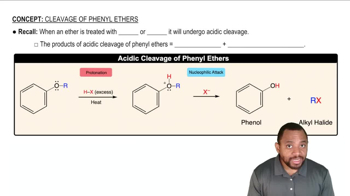Textbook Question
Give appropriate names for the following compounds:
(a)
(b)

 Verified step by step guidance
Verified step by step guidance Verified video answer for a similar problem:
Verified video answer for a similar problem:



 3:35m
3:35mMaster Anhydride Nomenclature with a bite sized video explanation from Johnny
Start learning